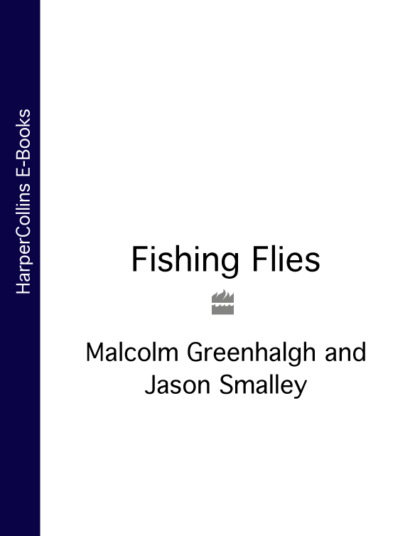По всем вопросам обращайтесь на: info@litportal.ru
(©) 2003-2024.
✖
Fishing Flies
Настройки чтения
Размер шрифта
Высота строк
Поля
BLACK & PEACOCK CADDIS
Hook: Nymph or long shank, sizes 8–14.
Thread: Black.
Case: Peacock herl.
Rib: Fine silver or gold wire.
Legs: 2 turns black hen hackle.
Head: Black thread.
This is really a long shanked version of the BLACK & PEACOCK SPIDER (see here (#ulink_90557754-568f-51e4-9c43-98ea86ad9539)), and exploits the magic appear that peacock herl has to trout. When tied with a short thorax of fluorescent green, yellow or orange floss or wool, this is known as the STICK FLY. This variation is especially effective for Arctic char in northern lakes (e.g. Arctic Canada, Greenland, Iceland).
CASELESS CASED CADDIS LARVA
Hook: Curved grub or shrimp hook, sizes 8–16.
Thread: Black.
Body: Cream wool or dubbed fur over the rear two-thirds, with blackbrown wool or fur over the front third.
NOTE: Poul Jorgensen, who invented this pattern, often gave the cream part of the body an overbody of natural latex, to suggest segmentation. ‘It’s not really needed’, he said. In any case, latex tends to rot after a while, especially in a warm, humid fly box.
CASELESS CADDIS LARVAE
During a flood, when boulders are being carried downstream, some caddis lose their cases as they are swept away. Autopsies suggest that trout look out for these caseless caddis and quickly mop them up. Fish as the river is fining down.
There are two main groups of caseless caddis larvae:
Rhyacophila is a group of free-living larvae that wander amongst the river-bed boulders and mosses seeking lesser creatures to devour. These may include other nymphs and larvae, fish eggs, and trout and salmon alevins.
Hydropsyche and their allies is a group of net-spinning larvae. They build tents and tubes from silk in which they take cover and which they also use to filter the water of food items. Trout are unlikely to encounter them in their hideaways – but they are very territorial, and as the Hydropsyche larvae grow, they each need more space and, as the stronger individuals retain territories, the weaker are forced to leave. Thus, throughout spring and summer, small numbers of larvae drift away downstream and may be eaten by trout.
WEIGHT: While some may be tied without ballast for shallower water, most should have a layer of fine lead wire wound in touching turns along the hook shank. Where the use of lead is prohibited, tungsten wire or foil, or copper wire might be used.
QUILL LARVA
Hook: Nymph or curved caddis hook, sizes 12–14.
Thread: As abdomen.
Abdomen: Ginger or green cock hackle stalk.
Thorax and legs: Brown ostrich herl, with the top fibres trimmed away. It is worth strengthening the top of the thorax with a good, slightly thickened head cement.
The ginger stalk version matches Hydropsyche, the green Rhycophila. This simple pattern is a modification of A. K. Best’s Caddis Quill Larva (in A. K.’s Fly Box, 1996).
BREAD CRUST
Hook: Nymph, sizes 10–14.
Thread: Black.
Body: Orange, cream or green floss
Rib: Dark brown hackle stalk.
Hackle: Grizzle hen.
A popular US pattern by Larry Solomon and Eric Leiser (in Caddis and the Angler, 1977), the latter two body colours seem more effective in Europe.
During the late 1940s and 1950s C. F. Walker made a special study of the trout insects in British lakes and rivers. The following fly is perhaps the earliest imitation of a Rhyacophila larva.
CASELESS CADDIS
Hook: Nymph, sizes 12–14.
Thread: Olive.
Body: Seal’s fur (or substitute), ½ olive, ½ green, well mixed.
Rib: Oval gold tinsel.
Hackle: Woodcock underwing covert.
Head: Cock pheasant tail herl.
FUR-BODIED RHYACOPHILA
Hook: Curved caddis hook, sizes 12–14.
Thread: Olive.
Abdomen: Green, olive green or light green fur (a mix of, for example, rabbit and seal’s fur is better than only one type).
Rib: Fine gold wire or finest oval tinsel.
Thorax: Hare’s ear.
Legs: Few fibres brown speckled partridge hackle (optional).
Essentially a lake pattern that is very effective in the evening – fished along shores onto which waves are breaking.
FUR-BODIED HYDROPSYCHE
Hook: Curved caddis hook, sizes 12–14.





